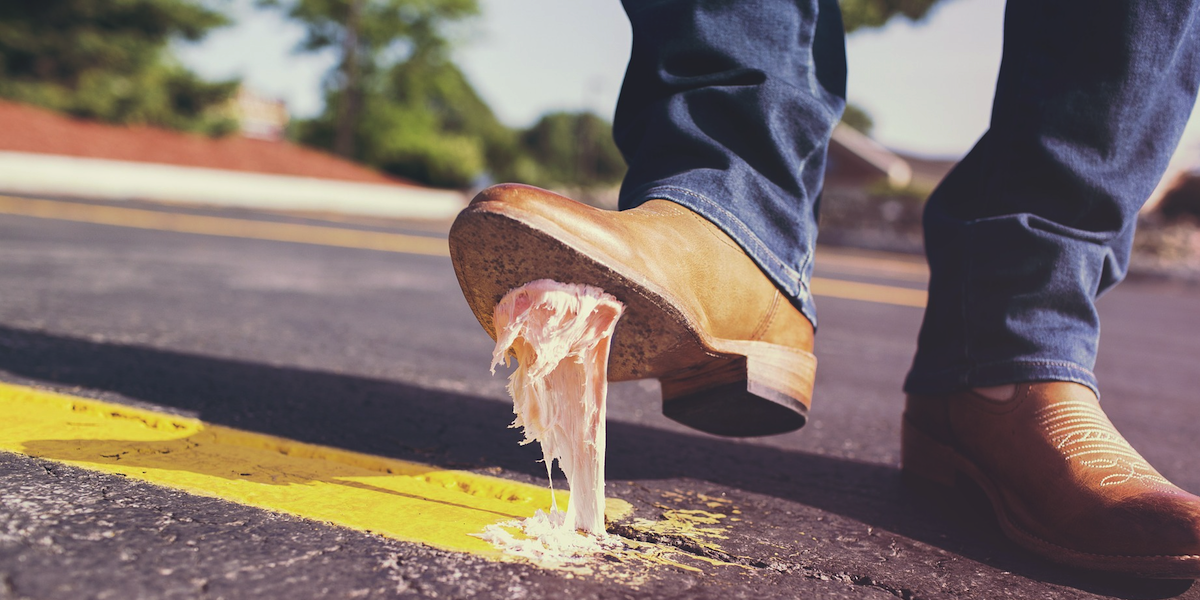

Anyone who has ever stepped on gum or felt a sticky glob on the underside of tables knows chewed gum can be a pest.
But did you know that chewing gum is also a problem for the environment? Although it was once made of natural substances,
modern gum is made from synthetic, petroleum-based polymers called polyisobutylene, which is the same rubbery material you’d find inside car tires. This means most gum sold today is non-biodegradable.
Sure, there are bigger planetary foes than chewing gum, but one 1999
review found that the world market for chewing gum is estimated to be 560,000 tons per year, so it adds up. If gum is not disposed properly, it either accumulates in the environment, inadvertently ends up in the stomachs of animals, or local governments have to spend a lot of money scraping it off sidewalks and other surfaces. Chewing gum happens to be the second most common form of street litter after cigarette butts.
You can always switch to biodegradable varieties, mints, or practice better dental hygiene if you want fresh breath. But as
the BBC recently highlighted, one designer has another brilliant solution to the pervasive problem.
For the past decade, Anna Bullus has headed UK-based
Gumdrop, the first company in the world to recycle chewing gum by turning it into a moldable material that can be used in a variety of rubber and plastic products, including cups, guitar picks, and even 100 percent recyclable rain boots.
“When you are handling the finished product, you do take a while to adjust to the fact that this has been in somebody’s mouth previously,” Brett Nixon, the manager at a plastic molding specialist in Leicester that works with Gumdrop, told the BBC.
“But once you get over that fear it’s easy. By recycling it and giving it another lease of life it’s helping the environment, it’s an absolutely fantastic idea.”
The company’s main product is the Gumdrop Bin, a bright pink bin designed specifically for the disposal of chewed gum. The bin is made from recycled gum, of course.
Two #gumdrop bins have gone up on #Kensington high street #today so that you can carry on #recycling your #gum pic.twitter.com/OmfQz1UHjD
— GUMDROP LTD (@GUMDROPLTD) December 18, 2015
Gumdrop Bins have been installed in several universities, train stations, shopping centers and airports around the UK. According to the BBC, after a three-month trial of Gumdrop’s disposal program, London’s Heathrow Airport saw a “noticeable improvement” and saved £6,000 ($8,300) in cleaning costs.
As Bullus said, “I do believe that through the right design you can actually change the way people behave.”

 233k
233k  41k
41k  Subscribe
Subscribe 